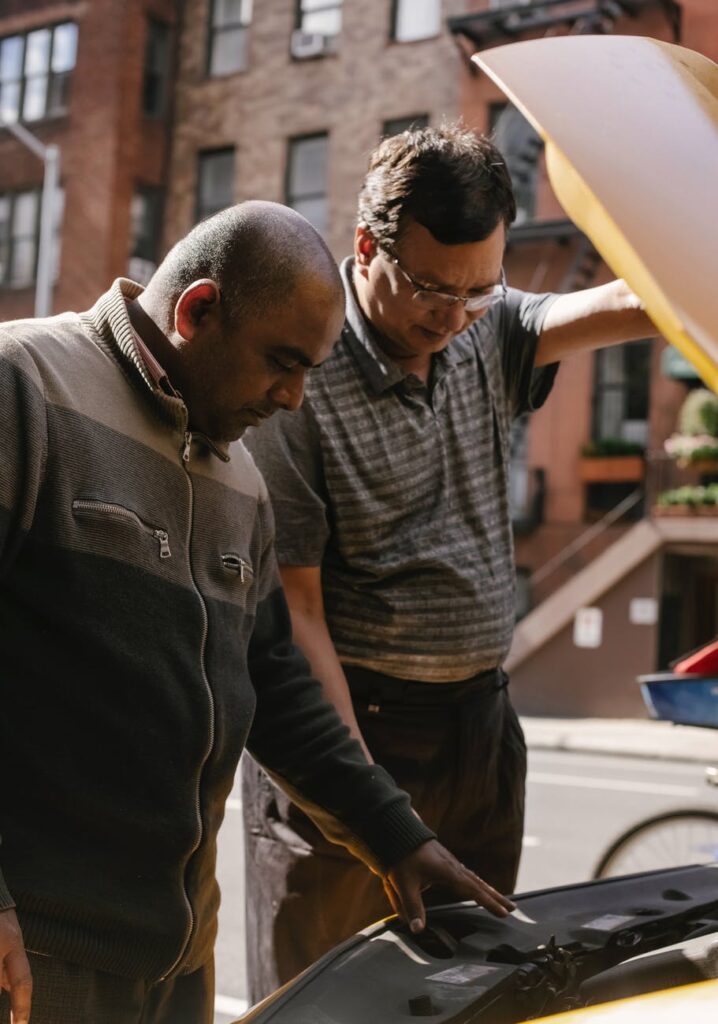Buying a car can be both exciting and stressful. There are so many choices that need to be made and so many considerations to be mindful of. If you are buying a car for your new driver, you might be feeling overwhelmed by your choices. Thankfully, there are ways you and your child can make educated decisions you can leverage for their first car-buying experience.
If you have been concerned about not being able to find the right car for a first-time driver, or you are worried that you will not make a good decision when you buy them their first car, there are some great tips and tricks that can make the process much easier. There is no need to worry about the car buying process if you use this guide to help you and your family to make an educated decision. You will start thinking that the car-buying process is fun and not worrisome when you use the tips in this guide.
If you are ready to learn more about buying a car for a new driver, read on!
Table of Contents
Complete Guide to Buying a Car for a New Driver
1. Set a Budget
This is the first and perhaps the most important part of the process of preparing to buy the first car. Without a budget, it’s easy to spend too much and to look at cars that you cannot comfortably afford. This can make any car shopping experience very stressful. Also, having a budget can give room in your wallet for other considerations like license, registration, and insurance.
Make sure that you look at your actual spending each month. Also, pick a number that you can afford for your monthly payment that will not waste your money monthly. As a parent, make sure you can afford this payment if your child will not be helping out with the cost. This spare cash can help you afford gas, surprise repairs, and other considerations that you might not think of at the time of buying your vehicle.
Also, consider figuring out what you can afford to buy in cash versus what you can afford to pay for a monthly loan amount. If you are wanting to avoid the cost of financing your car and making monthly payments with interest, you should know what you can afford if you find a car that you can buy outright. There are benefits to both kinds of purchases. Therefore, you should be prepared with a budget for both kinds of purchases.
2. Decide if You Want to Lease or Buy Your New Driver’s First Car
This can seem like a very attractive buying option since the payments are often so low and you are not going to own the car at the end of the lease period. For some people, this is the best way to get into an affordable vehicle that is new and has all the right features and functions on their wish list. There are many downsides to the leasing reality, however.
Be aware that when you lease, you can only drive the car a set number of miles each year. If you exceed this mileage cap you might be penalized. There can also be issues related to insurance. This is because leasing insurance is also usually required for the period that you will be driving the car. Most first-time car buyers are also not eligible for a lease due to their age. Therefore, you would be on the lease alone in most cases.
Read our article “Deciding Between Leasing and Buying Your Next Car” to learn more.
3. Look at Mileage
While it can be tempting to buy a fun and fancy car that can drive fast for your new driver. It is important to consider mileage for your purchase. As first-time buyers and new drivers, they will probably be on a tight budget. This means that the money that they spend on gas each month can really impact what kind of car they can afford to get. If you are willing to look at fuel-efficient models, you will be able to spend more on your car for a few extras and you will have more money in your pocket at the end of each month.
Fuel-efficient cars do not have to be boring either. Some of the most comfortable cars on the market are considered fuel-efficient commuter vehicles. SUV models will rarely fit into this bracket, and trucks will also fall short, but there are many sedans that will offer you a great driving experience as well as being easy on the pocketbook when your new driver pulls up to the gas pump.
4. Consider Safety When Shopping for a New Driver’s Car
It can be tempting to both kids and parents to pick up an older car that was made with less in the way of safety features. Older cars might seem tempting for a first-time purchase. This is due to the cost savings that they can offer you at the time of purchase. There are some things that you should consider when you pick an older car for your daily driver, however.
Older cars might not have anti-lock brakes or the full complement of airbags that modern cars do. You might also find that they are more prone to issues with safety system failures. Additionally, should always look at the safety rating for the car that you are thinking of buying and weigh out the cost savings against the likelihood that your new driver will survive a serious car accident.
You cannot buy health but you can buy safety, and spending a few extra thousand dollars for a car that will help to save your new driver’s life in a serious crash is often well worth it.

5. Shop Around
Don’t be tempted to be pressured into buying the first car that you and your new driver test drive. Dealerships make you feel like the car you just drove is going to sell the moment you walk away. If you both like one car better than the others you looked at, go ahead and finalize the purchase. However, it is often better to look at many cars before you and your new driver decide what to buy.
New car owners might not have driven many cars or know what they like. Assuming that buying another car just like the one that your new driver has been driving is not always the best choice for your needs. Your new driver should try out at least three or four cars before you both decide what to buy. Being pressured into buying is always risky. Therefore, be sure you are not being tricked into buying a car that neither of you is sure about.
Read our article “Best States to Buy a Car: How to Save Thousands (+ tips)” to get valuable insights and money-saving tips.
6. Consider Shopping Online and Having Your New Driver’s Car Shipped to You
While it is still a good idea to go and test drive a vehicle before you buy it for a new driver, you should consider looking at online listings to see what is out there in your local area. You can better plan a day of test driving if you are looking at the listings online for different dealerships. Also, you might also stumble across private sellers with a great car for your needs.
There are pros and cons to buying and shopping online. Nevertheless, this can be a great way to save time overall. You can always call to be sure that the car that you are interested in is on the lot as well. This can save you some time and haggle with the salesperson if you are able to find out over the phone if the car you wanted to see is even still on the lot.
If you are going to shop online, be prepared with your choice of shipping company to bring the car to you. You may not be able to go test drive the car and you will have to have your vehicle shipped to you and your child after you buy it. Just accepting the company that the dealership suggests might not be the best choice for your needs. Always make sure that you are working with a qualified and licensed car shipping company for this need.
Shopping online can also help to rule out cars that really do not fit your needs. You can narrow your search down to many different features and factors. This will rule out cars that might tempt you but do not fit your needs. Being unable to tempt yourself with cars that are outside your budget can be a big help for buying smart.
Related articles:
- Top 10 Site to Buy and Sell Used Cars
- How Do They Ship My Car if I Bought It Online?
- Tempest Car Search: How It Works (+ Should You Use It?)
7. Choose Between New and Used
It is always tempting for first-time buyers and parents to look only at used cars. This is supposed to be the best way to save money. This is because many people incorrectly think they cannot afford a new car if they are first-time buyers. This might be the case for some car makes and models. However, there are a surprising number of affordable new cars out there.
If you are looking at efficient, base-model commuter cars, you will probably be surprised at how cheap these cars really are. When you buy new, you get the benefit of warranties and guarantees. These benefits and guarantees will last for at least the first year that you are driving the car. Having a new car can bring with it a lot of peace of mind as well as that great new car smell!
When shopping, it is often best to be open to both new and used cars. You might find a great deal in either group and you will be cheating yourself out of part of the possible slate options open to you if you only shop for used cars. Used cars can have issues as well related to wear and tear parts that are just about to fail. They can also have issues with broken and damaged interior items.
8. Get Pre-Approved
One of the steps that most people are not aware of that can help with the first-time buying process is getting pre-approved by your bank. You will find out from this process if your credit and that of your first-time buyer are good enough to take out a loan together. You will also find out what amount of money you can get for your loan.
Many people falsely assume that a first-time buyer’s credit will be really excellent. This is because they are young and do not own a house or other financed items. This is not always the case. Additionally, when you have a limited credit file, even a small thing like a missed payment can impact your credit.
You might have to have a co-sign on a loan to get any kind of car that your first-time buyer would want. Also, know about this before you try to make an offer on the car you want to buy.
Limit Of Your Budget
Knowing what the limits of your budget are when you are shopping can be really helpful as well. If you know what kind of loan you can get from your lender, you can better determine how much you will need or want to put down in cash in order to secure the deal. You might want to stick with a low down payment and finance most of the amount, or you might be prepared to pay a large down payment to make up the difference between the cost of the car and the loan offer you were given at your pre-approval.
The pre-approval process can also turn up ways to improve your credit and your lender might be willing to work with you to consolidate debts and do other work to improve your credit. Being able to apply for a loan with good credit behind you is always better than trying to back a loan with poor credit. The amount of interest that you will pay over the life of the loan with poor credit can really add up and you should avoid this if you can.

9. Consider if You Really Need Aftermarket Items
Car dealerships will want to sell you all kinds of warranties. They will also try to sell you policies for oil changes and tires when they are selling you a car. They make a lot of money off of these add-ons to your loan. This is because you probably won’t need them if you have car insurance or you are buying a new car. The other problem with these add-ons you’re offered when you want to sign the paperwork is that they can add up.
Be wary of anything that is quoted to you by the monthly rate. This automatically makes the cost seem like it is much less. Nevertheless, if you add up the monthly cost, the annual amount will be much more than you want to spend. There are a few added tempting offerings for insurance and warranties that a dealer can offer you.
If you are thinking about adding any of these aftermarket items, make sure that you figure out how much they cost each year. You should also be aware that adding these items to your loan will impact the number of months that it takes to pay it back in some cases. This will also increase your monthly payment and monthly interest.
New cars often come with really great warranties as it is, and anything that is added on top is just insurance that you do not need. If you are buying a used car, there might be a need for an extended warranty for some part of the engine or other part that you are worried about breaking down. You should still make sure that you are looking at the total cost of the item and not the monthly cost when you agree.
10. Research the VIN
No matter what kind of car you are looking at that is used, make sure you look up its VIN. You can usually see with the VIN in hand whether the car has been in an accident. Additionally, the VIN can show if the car has suffered some damage that has been repaired. This will also show you if the car has a salvage title. Be aware that most companies will not insure a salvage titled car and you will want to avoid this due to the inherent issues with a car that has been totaled in the past.
Doing VIN research helps to prevent accidentally ending up with a car that won’t hold up to your needs. You will often be able to see a lot about the prior care of the car. Also, you will be able to tell if it has been registered in places that get tough and rough winters. Cars from places that have icy roads and other winter challenges can be damaged due to deicer rusting out the bottom of the car as well.
11. Take a Friend to Meet a Private Seller
Not only are private seller meetups a possible way for someone to harm you or defraud you. However, they can also be uncomfortable if the person selling the car is difficult and not open about the vehicle. If you take a friend with you, you will be safer and less likely to be scammed by the seller.
You should also consider bringing along a knowledgeable friend or going to this meeting with you and your child. Make sure that they look over the engine and some of the other car parts before you decide to buy. It is a common story for private buyers to find that they were lied to about the condition of the car that they have just bought. Having a friend who knows about cars along with you to look at the car can help a lot with this risk.
12. New Drivers Should Test Drive Potential Cars With Attention to Detail
Besides deciding if you enjoy driving the car, your test drive can help you to figure out if there are real issues with the car that should be cause for concern. Strange noises, a vibration in the brake pedal or steering wheel, and pulling to one side or another can be signs of issues that might make you pass the car up. Even new cars can have problems when you are test driving them that might make you want to avoid them.
You should also look at some of the moving parts besides the driver’s door. Make sure that you open all the doors and the hatch or trunk. Also, look at the seat adjustments for each seat to make sure they work. The more things that you try out in your car before you buy, the less likely you are to end up with a car that does not suit your needs or that has an issue that you could have noticed when you were trying it out.
There are sometimes problems with any car after it has been driven off the car lot. Nonetheless, you should try to look at all the things that you might have cause to be concerned about. Being a smart car buyer means making sure your car works properly when you first drive it and after.
13. Plan to Negotiate
When buying from a dealer, in particular, you will want to be prepared to negotiate for a better price. There are many ways to make sure that you are prepared for this process. Some of these ways require you to do a little research before you prepare to make an offer.
Consider getting onto Kelly Blue Book and looking up the values and sales prices of comparable cars. This can help you to defend your position that the car is overpriced. You should make sure you bring up concerns that you have about the car related to the test drive. You can negotiate to have these items addressed before you buy the car. Otherwise, this might be the thing that makes you walk away from the deal.
Mileage and wear and tear can also be good reasons to negotiate for a better price. If you need to replace tires, replace an engine part, or the car is due for a major service right after you buy it, you should not pay full price for the car. These kinds of items can help you to get a fair price. Furthermore, you should always tell them that you want the sales price reduced by this amount at least.
14. Get a Contract When Purchasing a Car for a New Driver
If you are buying from a private seller, you will still want a bill of sale. This will allow you to transfer the title and prove that you and your child legally bought the car. You should make sure you hop online to print out a generic sales contract to bring with you. The seller might not be prepared with this kind of document. However, you can come ready to make sure that your deal is done correctly.
Both you and the seller should have a signed copy of the sales agreement. This is to eliminate any confusion that might arise at a later date. The seller should want this agreement for their own needs as well since they are selling the car as-is and should want to be protected from you coming back to them wanting money back for an issue that has cropped up.
Buying Your New Driver a Car Can Be a Breeze

If you were stressed about buying your first car, this buying guide should have set your mind at ease about the process. You and your first-time buyer should use most of these tips and tricks during any car shopping experience. Also, you will have a much better experience using these tips when you shop for a new car. Additionally, doing your research and bargaining for a better price are key elements to any successful car purchase.
If you use this guide, you will be able to find the perfect car for your needs with ease!

